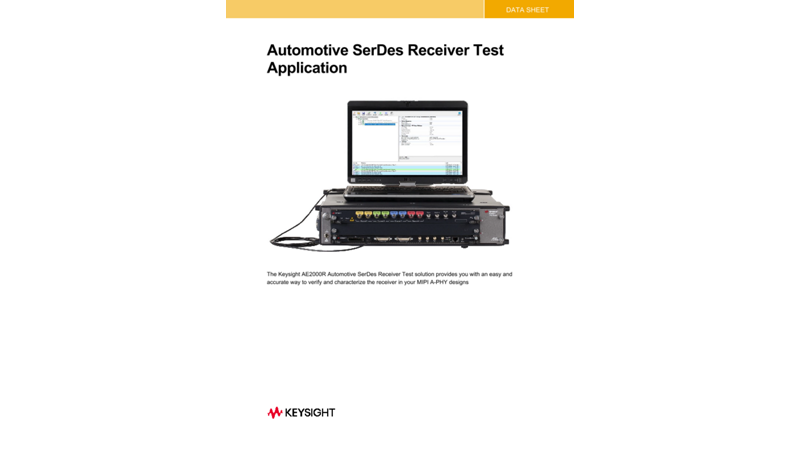What are you looking for?
AE2000R Automotive SerDes Receiver Solution
Validate and characterize physical layer performance of standardized automotive SerDes receivers
Starting from
Highlights
MIPI A-PHY® Automotive SerDes Receiver Compliance Solution
Next-generation advanced driver-assistance systems (ADAS) will use sensors like cameras, radar, and lidar with increasingly high resolutions, requiring a network with faster data throughput and greater bandwidth. Serializers and De-serializers (SerDes), are common in virtually all high-speed digital bus technologies.
The point of receiver testing at the PHY layer is to stress the receiver and to validate its operation in the noisy environment of the car. Receiver tests ensure the quality of the digital transmission by measuring the receiver’s ability to recover data from an impaired input signal. The need for interoperability makes test and measurement a key focus of the standard because it is a critical path to enable broad adoption.
The AE2000R is a solution that includes control software for the Arbitrary Waveform Generator (AWG) to create compliant test signals. It provides all signal parameters and all tests specified in the applicable compliance test specification.
Key Capabilities
- Test performance of Automotive MIPI A-PHY receivers in the presence of injected noise.
- Includes all required instruments, fixtures, and accessories.
- Accurate and repeatable results with the Keysight AWG.
- Test report generation.
Ordering information
- Software supports Keysight M8195A AWG.
- Configuration includes AWG, fixture, adapters and software.
The datasheet contains configuration details.
MIPI® service marks and logo marks are owned by MIPI Alliance, Inc. and any use of such marks by Keysight Technologies is under license. Other service marks and trade names are those of their respective owners.
Automotive SerDes Receiver Testing Explained
This video highlights the importance of automotive SerDes receiver testing in high speed automotive applications. We will go over the technical challenges and complexity in implementation as well as what the test setup looks like. We will also show how to execute the tests both to specified limits and also to characterize the boundaries of operations of the device under test.
Extend the Capabilities of Your Automotive SerDes Receiver (Rx) Solution
Featured Resources
Further Reading
Want help or have questions?





